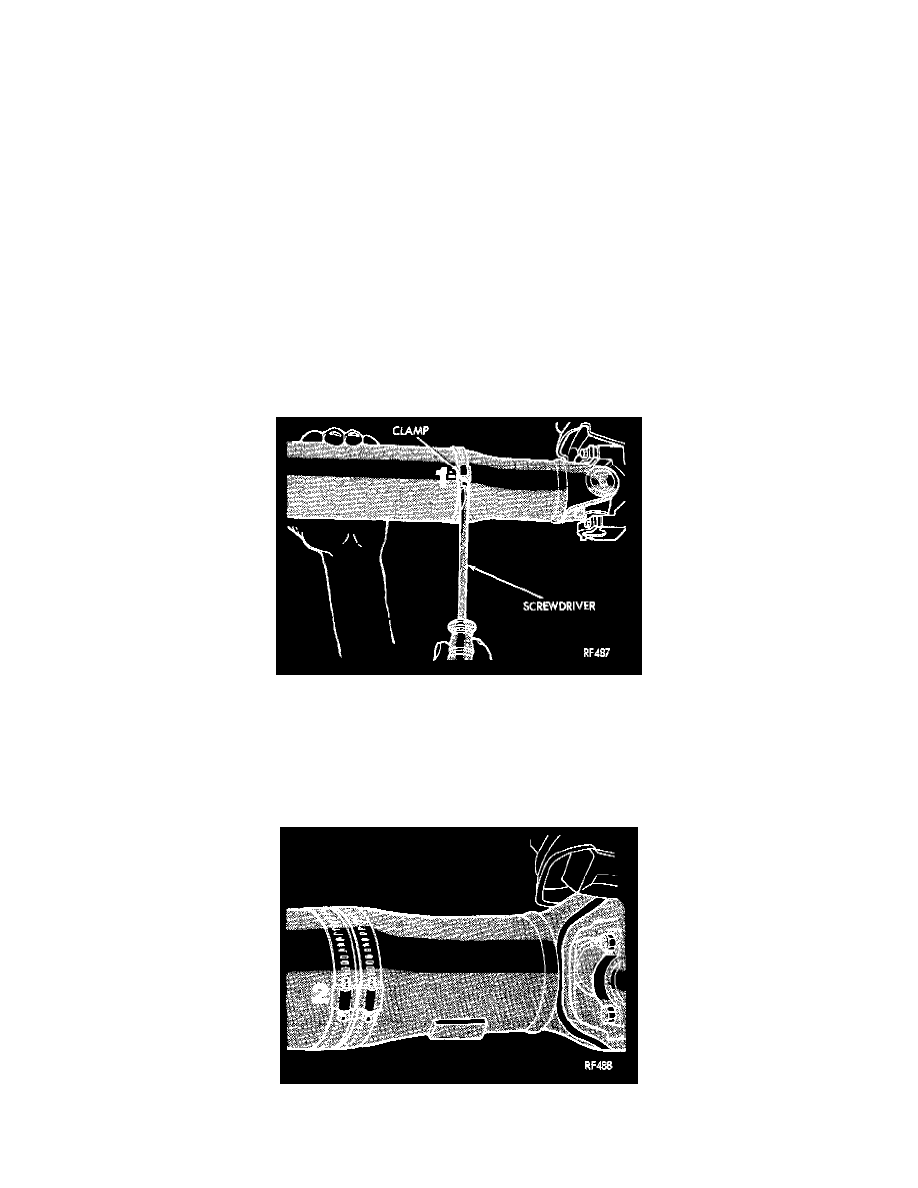Dakota R/T 2WD V8-5.9L VIN Z LDC (1999)

Drive/Propeller Shaft: Component Tests and General Diagnostics
Vibration
Tires that are out-of-round, or wheels that are unbalanced, will cause a low frequency vibration. Refer to Tires and Wheels, for additional information.
Brake drums that are unbalanced will cause a harsh, low frequency vibration. Refer to Brakes and Traction Control, for additional information.
Driveline vibration can also result from loose or damaged engine mounts. Refer to Engines, for additional information.
Propeller shaft vibration increases as the vehicle speed is increased. A vibration that occurs within a specific speed range is not usually caused by a
propeller shaft being unbalanced. Defective universal joints, or an incorrect propeller shaft angle, are usually the cause of such a vibration.
Unbalance
NOTE: Removing and re-indexing the propeller shaft 180° relative to the yoke may eliminate some vibrations.
If propeller shaft is suspected of being unbalanced, it can be verified with the following procedure:
1. Raise the vehicle.
2. Clean all the foreign material from the propeller shaft and the universal joints.
3. Inspect the propeller shaft for missing balance weights, broken welds, and bent areas. If the propeller shaft is bent, it must be replaced.
4. Inspect the universal joints to ensure that they are not worn, are properly installed, and are correctly aligned with the shaft.
5. Check the universal joint clamp screws torque.
6. Remove the wheels and tires. Install the wheel lug mats to retain the brake drums or rotors.
7. Mark and number the shaft six inches from the yoke end at four positions 90° apart.
Fig. 4
8. Run and accelerate the vehicle until vibration occurs. Note the intensity and speed the vibration occurred. Stop the engine.
9. Install a screw clamp at position 1.
10. Start the engine and re-check for vibration. If there is little or no change in vibration, move the clamp to one of the other three positions. Repeat
the vibration test.
11. If there is no difference in vibration at the other positions, the source of the vibration may not be propeller shaft.
Fig. 5
